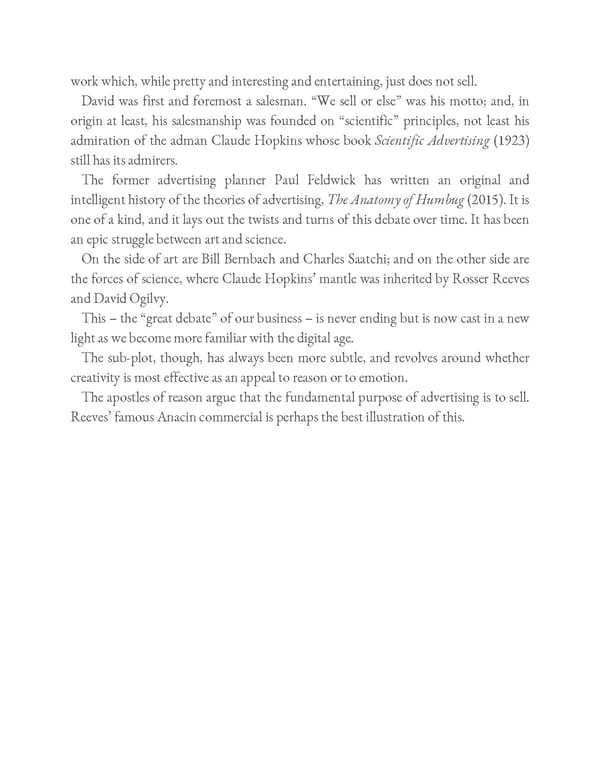work which, while pretty and interesting and entertaining, just does not sell. David was first and foremost a salesman. “We sell or else” was his motto; and, in origin at least, his salesmanship was founded on “scientific” principles, not least his admiration of the adman Claude Hopkins whose book Scientific Advertising (1923) still has its admirers. The former advertising planner Paul Feldwick has written an original and intelligent history of the theories of advertising, The Anatomy of Humbug (2015). It is one of a kind, and it lays out the twists and turns of this debate over time. It has been an epic struggle between art and science. On the side of art are Bill Bernbach and Charles Saatchi; and on the other side are the forces of science, where Claude Hopkins’ mantle was inherited by Rosser Reeves and David Ogilvy. This – the “great debate” of our business – is never ending but is now cast in a new light as we become more familiar with the digital age. The sub-plot, though, has always been more subtle, and revolves around whether creativity is most effective as an appeal to reason or to emotion. The apostles of reason argue that the fundamental purpose of advertising is to sell. Reeves’ famous Anacin commercial is perhaps the best illustration of this.
 Ogilvy on Advertising in the Digital Age Page 178 Page 180
Ogilvy on Advertising in the Digital Age Page 178 Page 180